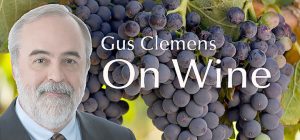Champagne and prosecco are sparkling wines. Both can be delicious, liven up an event, pair well with many foods. But they are completely different wines. Comparisons:
 • Champagne is made in the Champagne region of France, northeast of Paris. Prosecco is made in the Veneto region of Italy, north of Venice.
• Champagne is made in the Champagne region of France, northeast of Paris. Prosecco is made in the Veneto region of Italy, north of Venice.
• Champagne is made using some formula of chardonnay, pinot noir, and pinot meunier grapes. Prosecco is made primarily with glera grapes—85% glera is the minimum.
• Champagne is made using a time and labor-intensive process where a second fermentation occurs in the bottle (“traditional method”). Prosecco’s second fermentation occurs in a large stainless steel vesssel (“tank” or Charmat-Martinotti method).
• Because of labor and several other factors, a bottle of Champagne will cost between $40 and more than $1,000. A bottle of prosecco will cost $13-20, although some go for a bit more.
• Champagne typically is 12% ABV. Prosecco typically is 11% ABV.
• Champagne’s primary flavors include citrus, peach, white cherry, almond, orange zest, and toast/brioche. Prosecco’s primary flavors include green apple, honeydew melon, pear, peach, honeysuckle, banana cream.
• Because Champagne spends significant time in the bottle on the lees (dead yeast cells), it has rich, full taste and texture with fine, persistent bubbles. Prosecco spends much less time in the tank, which emphasizes lightness and freshness. Prosecco bubbles are lighter and frothier and don’t last as long as Champagne bubbles.
• Because of the fermentation difference, a Champagne bottle holds 6-7 atmospheres of pressure (up to 100 psi, three times the pressure in the tires of your family car). A prosecco bottle holds 2-4 atmospheres of pressure (30-60 psi).
• Both Champagne and prosecco come in a range of sweetness, from bone-dry to sweet. The most popular Champagne is brut with 0-12 g/L (grams per liter of residual sugar). The most popular prosecco is extra dry 12-17 g/L of residual sugar.
Tasting notes:
• Anna de Codorníu Brut Rosé NV: Lovely color makes it instantly appealing in the glass. Traditional Champagne method (método tradicion). $13-17 Link to my review
• Ca’ di Prata Italia Prosecco Brut DOC NV: more full-bodied than many prosecco offerings. $15-16 Link to my review
• Adriano Adami Bosco di Gica Brut Valdobbiadene Prosecco Superiore DOCG NV: Crisp, fresh. Extremely reliable producer delivers another excellent pour. $18-22 Link to my review
Last round: Some days should come with a warning label: Today is going to really suck. Put a bottle of sparkling in the wine fridge. Maybe two. Maybe three if family is with you.
